Are spiders attracted to LED lights? The draw of spiders towards LED lights has captured the attention of homeowners and researchers alike. As individuals seek practical approaches to manage spider infestations, it is essential to examine the possible influence of LED strip lights on arachnid behavior.
The commonly noted occurrence indicating that LED lights attract spiders has spurred a more in-depth investigation into the relationship between these arachnids and LED strip lights.
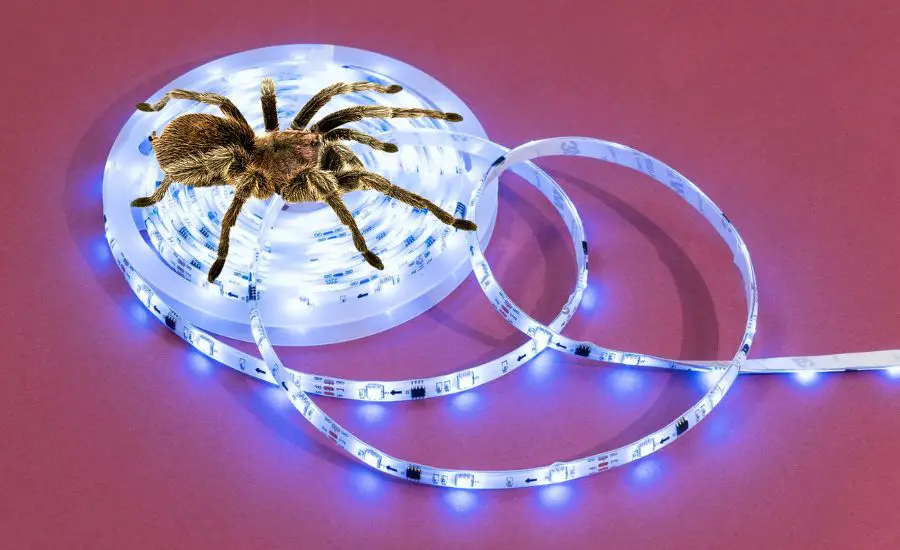
Spiders dilemma: traditional incandescent bulbs vs. LED strip lights
Homeowners often compare the influence of traditional incandescent bulbswith modern LED light fixtures on spider activity, sparking curiosity about whether one type of illumination attracts spiders more than another.
LED strip lights vs. traditional light bulb
Anecdotal evidence suggests that spiders may not discriminate between LED light and traditional incandescent lights when selecting locations for web-building.
The broader claim that “LED lights attract bugs” implies a potential connection between spider activity and the presence of flying insects drawn to light, irrespective of the light source.
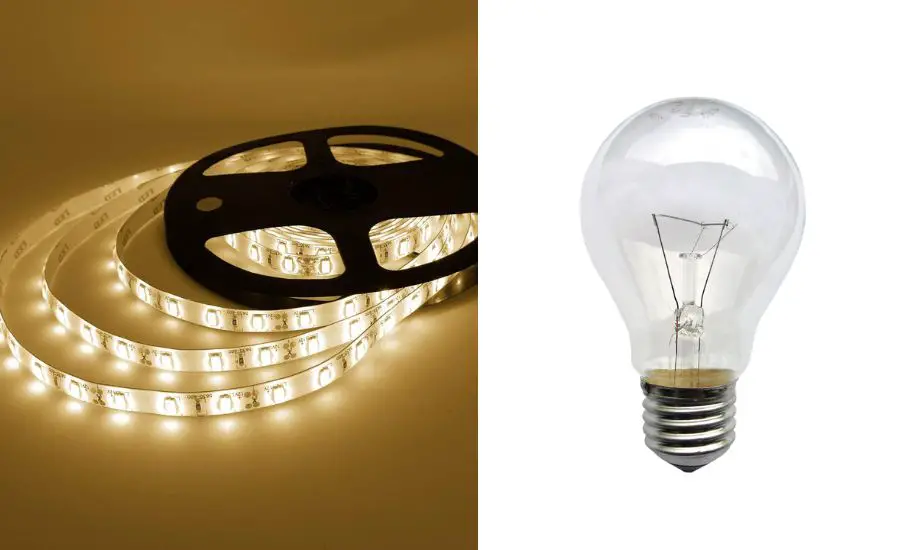
LED light: a magnet for the spider?
The assertion that LED strip lights attract spiders is often grounded in the general observation that spiders tend to build webs in proximity to light sources. However, it is crucial to clarify whether LED lights specifically hold an unmatched enticement for spiders compared to other bright natural light sources.
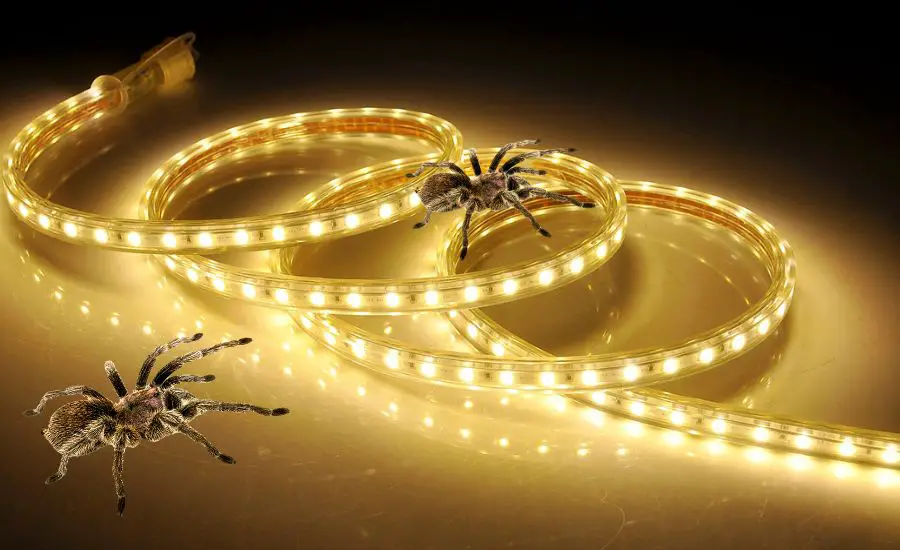
Exploring LED light strips characteristics
“Led strip lights attract bugs” is a common belief, but major features of LED lights are crucial to understand.
LED lights are renowned for their energy efficiency and brightness.
We can confidently say that “LED lights attract insects; spider behavior may be impacted by a limited light spectrum in another way than by conventional lights, which emit a broader spectrum, including infrared.
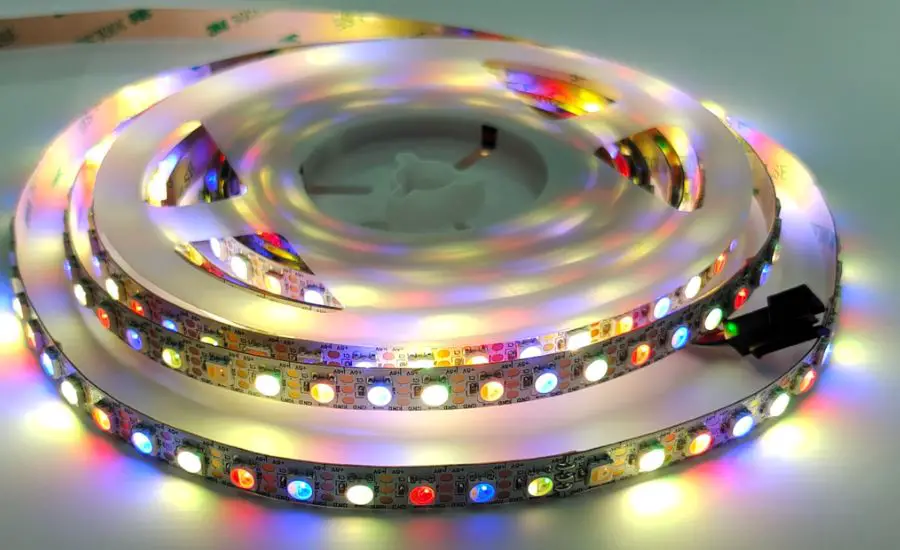
The impact of light color: yellow light and beyond
The notion that “yellow light” might deter spiders is an interesting perspective. Research on whether certain colors impact spider attraction is ongoing.
While specific colour of LED light temperatures may not affect the spider, further studies are needed to validate these claims and determine the significance of color in spider behavior.
Recent studies suggest that spiders are less attracted to blue light than many flying insects, revealing a potential divergence in their response to different wavelengths.
The soft glow of LED strip lights often reveals intricate spider webs, as these arachnids strategically position themselves near the illuminating source to capitalize on the increased insect activity drawn to the light, not choosing darker places because of the fewer insects’ presence.
The controversial role of blue light wavelengths, dark lights, or porch lights in spider control strategies is being explored more and more every year.
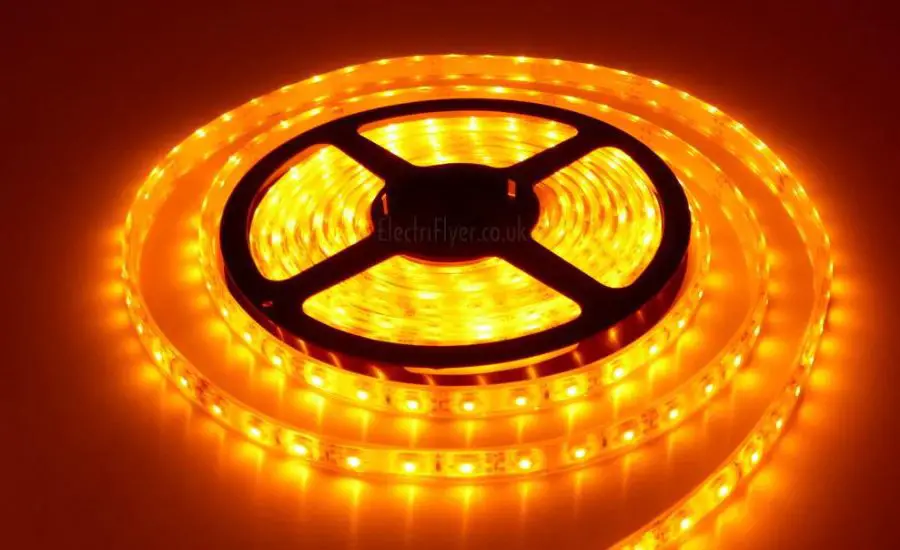
Real-life story
In a fascinating real-life scenario, a homeowner reported an unexpected discovery involving LED strips and spiders. Intriguingly, the homeowner observed a significant decrease in spider activity around the LED strips after replacing them with a warmer color temperature.
This curious anecdote adds a practical dimension to the ongoing discourse about the interplay between LED lights and spiders.
While individual experiences may vary, such firsthand accounts contribute valuable insights to the broader conversation, encouraging a nuanced understanding of the factors influencing spider behavior in the presence of specific lighting conditions.
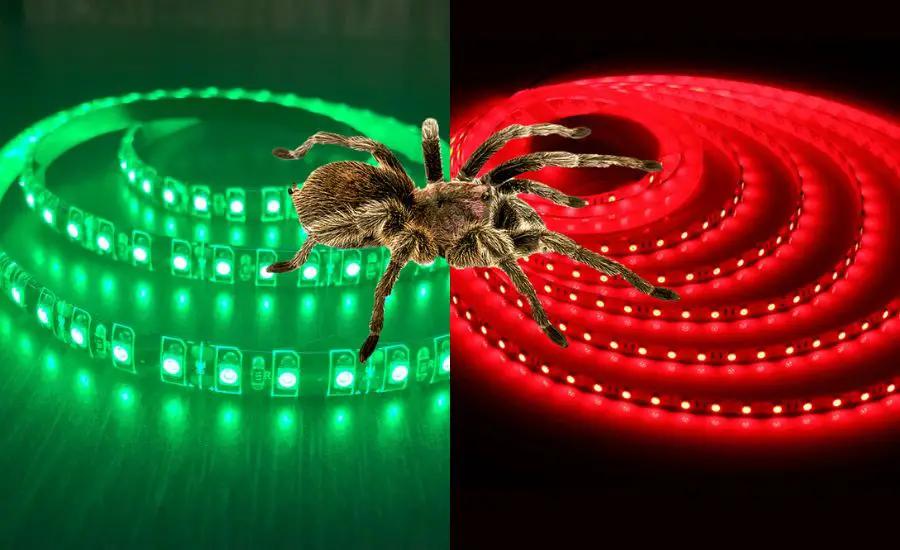
UV light and spider activity
The mention of “UV light” raises questions about the potential influence of ultraviolet light on spiders. Research on how spiders respond to UV light could provide valuable insights into their attraction patterns.
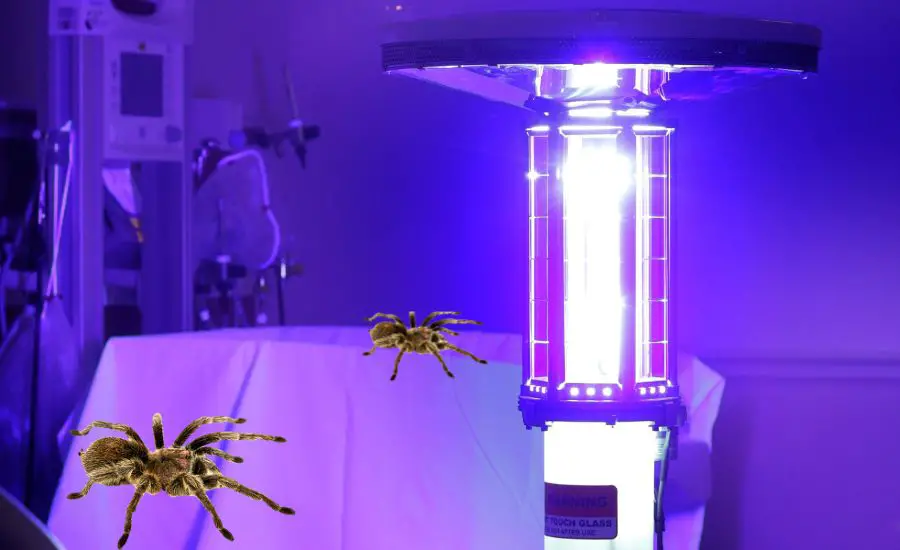
Illuminating the connection
In concluding our exploration of whether “LED lights attract spiders,” it’s crucial to acknowledge the multifaceted nature of spider behavior.
While spiders may indeed build webs near LED lights, the connection appears more closely tied to the presence of insects drawn to light rather than an intrinsic allure that light emitted from LED lights themselves.
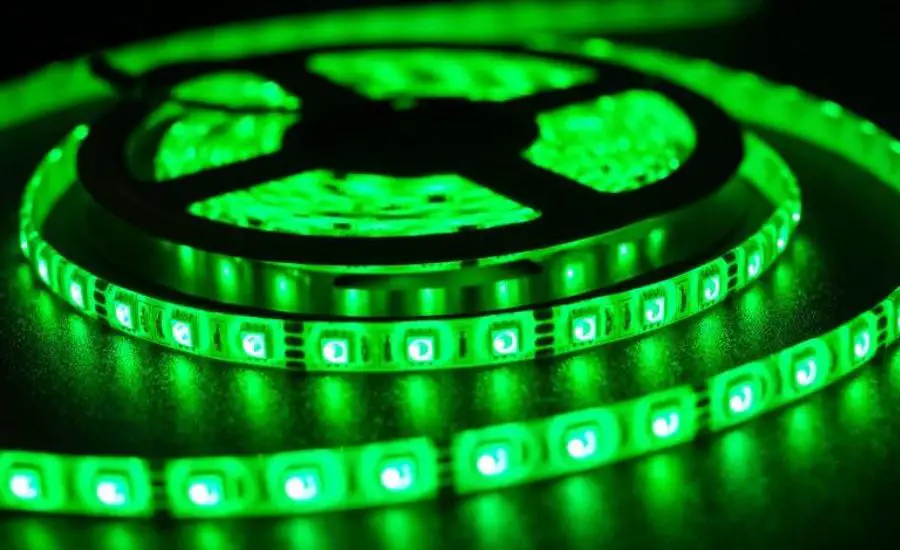
FAQ
LED strip lights, with their vibrant illumination, have been observed to attract spiders, prompting homeowners to wonder about the intriguing connection between these versatile lighting solutions and arachnid behavior.
Let’s discover the most frequently asked questions about the intriguing spider behavior near LED lights and the reasons thereof.
What color LED lights attract spiders?
While LED lights with warmer tones can attract spiders, some studies propose that spiders, in general, may not exhibit a strong preference for particular LED light colors, and factors like brightness, and the bugs abundance, as LED strip lights attract bugs, may play a more significant role in the allure.
What bugs do LED lights lure?
Unsurprisingly, LED lights attract bugs and a variety of insects, including mosquitoes, moths, and other nocturnal bugs. The insects are drawn to the light source, a phenomenon known as phototaxis.
Spiders, in turn, may be attracted to areas with increased insect activity, as it provides them with an easily accessible food source.
For that reason, the bugs drawn to LED light strips sway spider behavior in a roundabout way, creating a connection between the presence of insects and the activity of the spider near bright lights.
What kind of light keeps spiders away?
While no specific color of light has been definitively proven to repel insects, using LED lights with a warm, yellow hue may, according to some, be less attractive to them.
It is mostly believed that LED strips attract spiders and LED lighting type does not affect spiders’ activity. So it is better to choose according to energy efficiency, brightness, and accessibility of the LED lighting.
What spider is attracted to light?
Various spider species may respond to light differently. Orb-weaving spiders, for example, are known to build their webs in well-lit areas, taking advantage of the increased bug activity around LED lighting.
However, the attraction to LED strip lights is not restricted to a certain spider variety; rather, it seems to be a more generalized behavior observed in spiders seeking a reliable source of prey.
Orb-weaving spiders are often associated with this behavior, but it can vary among different spider species.
Wrapping up: LED strips and spiders – a clear perspective
As we continue to unravel the mysteries of spider behavior, it is essential to approach such claims with a scientific mindset.
Future research may shed more light on the specific factors influencing spider activity around LED lights, answering questions about spiders’ attraction to LED lightning and why LED lights attract bugs, thus helping homeowners make a knowledgeable decision about outdoor lighting and spider control.

My strong expertise is illuminating spaces. With a keen eye for detail and a passion for transforming environments through lighting, my dream is to leave indelible mark on the world of light design. Below are few facts of my biography, highlighting career and hobbies. Click here to contact me.